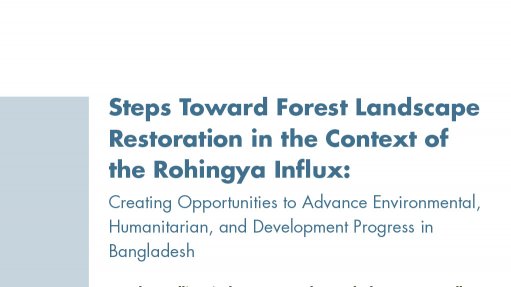
Since August 2017, over 740,000 Rohingya refugees have fled atrocities and violence in Myanmar to Cox’s Bazar, Bangladesh. There are now one million Rohingya refugees in Cox's Bazar, comprising about 30 percent of the population. This increase, coupled with immediate needs for fuelwood and shelter, has diminished livelihoods due to deforestation and loss of access to land; soil and slope erosion; fuelwood scarcity and associated risks to safety of people collecting fuelwood; increased encroachment and forest degradation; declining water quality, groundwater reserve depletion, and air pollution; decreasing soil quality; and climate vulnerability. To restore cleared forest areas, and improve human and environmental well-being, international actors must work with the Government of Bangladesh to implement a long-term forest landscape restoration (FLR) plan for Cox’s Bazar. This paper provides a number of recommendations which work towards this goal, focused on: improving efficiency and impact of reforestation investments; improving seedling survival and benefits inside and outside camps; improving disaster resilience and nutrition inside camps; and increasing ecological and social benefits out of camps.
Report by Global Center For Development